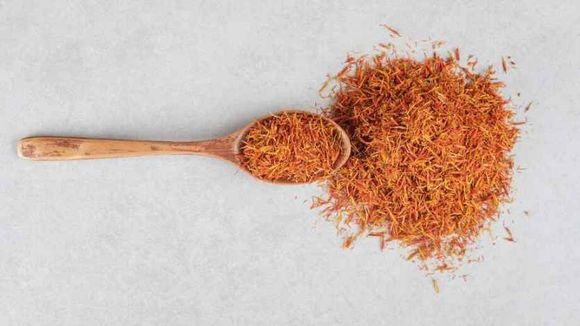What is saffron?
It is known that saffron is offered in "threads" or stigmas, which are actually the stamens of a flower – crocus Crocus sativus – that thrives in the hot climatic conditions of the Mediterranean, North Africa and the Middle East. 1
It is not the rarity of the flowers themselves that makes saffron so expensive, but their short range for flowering, low yield and the cost of human labor needed to collect the gentle reproductive parts. Here we are talking about hard work with tweezers, and not about magic machines for extracting stamens.
Like many of the most complexly flavored food products in the world - chartreuse, truffles, etc. - the exact taste of saffron is difficult to describe. It tastes like saffron that can't be compared to any other. You can say its taste is smokey, intoxicating or bright, slightly bitter or semi-sweet, but for this purpose you must first try it.
Despite all this complexity, however, saffron goes remarkably well with a wide variety of other foods, from rice and pasta to vegetables to meat (and even dessert).
What are the benefits of saffron?
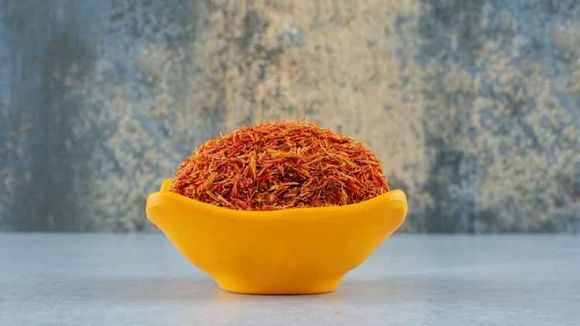
Antidepressant action
Enough evidence has been accumulated to make sure that saffron has remarkable antidepressant effects superior to placebo. Some studies have tested saffron against reference drugs, such as selective serotonin reabsorption inhibitors, and found that the effects were comparable, although saffron still has less evidence and less real-world experience than many drugs.
Antistress action
In addition, saffron appears to have an anti-stress effect, although the evidence for this is still insufficient and more research is needed in specific anxiety disorders. Some preliminary research suggests it may help relieve symptoms of premenstrual syndrome (PMS), menopause, various inflammatory conditions, and improved sleep, but much more research is needed to be sure of its efficacy for these purposes.
Powerful antioxidant
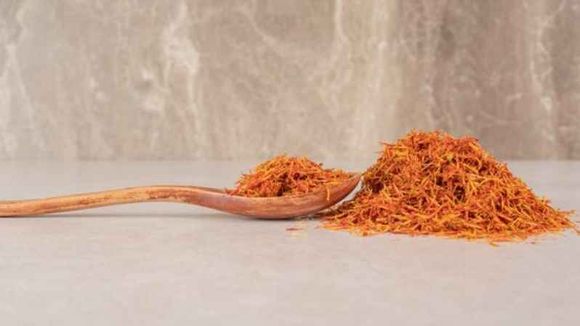
Saffron contains an impressive variety of plant compounds. They act as antioxidants molecules that protect your cells from free radicals and oxidative stress. The remarkable antioxidants in saffron include:
- Crocin
- Crocetin
- Safranal
- Kaempferol
Crocin and crocetin are carotenoid pigments responsible for the red color of saffron. Both compounds can provide the following benefits:
- Have antidepressant properties
- Protects brain cells from progressive damage
- Control inflammation
- Reduces appetite
- Aids in weight loss [ref. 1]
Safranal gives saffron its distinctive taste and aroma. Research has shown that it can help improve mood, memory, and learning ability, as well as protect brain cells from damage. 3
Finally, kaempferol is found in the petals of saffron. This compound has been linked to health benefits, such as reduced inflammation, anti-cancer properties, and antidepressant activity. 4
Antidepressant action
Saffron can help you improve your mood and overcome anxiety. In a review of 5 studies, saffron supplements were significantly more effective than placebo at treating symptoms of mild to moderate depression. 6 Still, larger studies on people with more participants are needed before experts can recommend saffron as a treatment for depression.
Anticancer action
Saffron is high in antioxidants that help neutralize harmful free radicals. Free radical damage has been linked to chronic diseases, including the development of cancer.
In in vitro studies, saffron and its compounds have been shown to selectively kill colon cancer cells or inhibit their growth, leaving healthy cells unharmed. 6 This effect also applies to cancers of the skin, bone marrow, prostate, lung, breast, cervix, and several other types of cancer cells. 7
Aphrodisiac
Aphrodisiacs are foods or supplements that help boost your libido. Studies have shown that saffron may have aphrodisiac properties especially in people taking antidepressants.
For example, taking 30 mg. Saffron daily for 4 weeks significantly improved erectile function compared to placebo in men with erectile dysfunction associated with antidepressants. 8
Control of appetite and weight loss
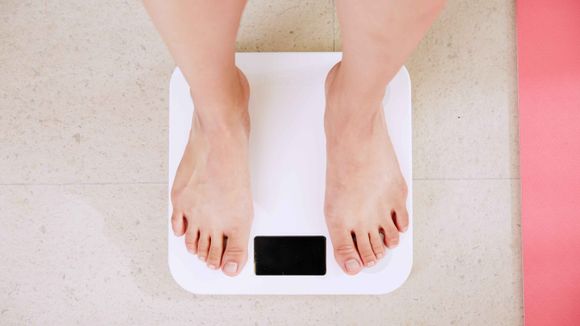
There are several studies according to which saffron can help curb appetite. In one 8-week study, women taking saffron supplements felt significantly fuller, ate less often, and lost significantly more weight than the women in the placebo group.
In another 8-week study, taking a saffron extract supplement helped significantly reduce appetite, body mass index, waist circumference, and total adipose tissue. 9
Relieving PMS symptoms
Premenstrual syndrome (PMS) is a term that describes physical, emotional, and psychological symptoms occurring before the menstrual cycle begins.
Studies have shown that saffron can help treat PMS symptoms. In women aged 20-45 years, taking 30 mg. Saffron daily was more effective than placebo at treating PMS symptoms such as irritability, headaches, appetite, and pain syndrome. 10
Prevention of heart disease
Animal studies and in vitro tests have shown that saffron's antioxidant properties can lower blood cholesterol and prevent blockage of blood vessels and arteries.
Lowering blood sugar levels
Saffron can lower blood sugar levels and increase insulin sensitivity, as shown in vitro studies in mice with diabetes.
How can you use saffron?
Saffron is often used in dishes with rice, paella and risotto, as well as in Indian curry and Iranian stews. It is also used to flavor some cheeses and liqueurs. Let's take a look at some of the possibilities.
Culinary uses
Saffron is most often used in cooking as a flavor enhancer or colorant. When used for cooking, the spice releases essential oils that emit a floral aroma and give a unique bitterness. This combination creates a distinctive taste that can not be reproduced by any other spice. A small pinch of spice added to a dish can help a lot in terms of taste. Due to its strong taste, it is often used sparingly.
Paella is a Spanish dish traditionally made with rice, beans, meat and seafood, flavored with saffron. Another famous dish that uses the spice is risotto alla Milanese, an Italian rice dish made with broth and flavored with parmesan and white wine. The bouillabaisse seafood soup from Marseille also traditionally includes saffron as one of its main ingredients.
Medical uses
Historically, saffron has been used for medicinal purposes since ancient Roman times, when it was prescribed as an antispasmodic medicine for menstrual pain by Pliny the Elder.
Today, some studies show that consuming small amounts of saffron (between 0.5 5 grams per day) can help reduce symptoms associated with premenstrual syndrome, such as bloating and cramping. Although there is not enough scientific evidence to support these claims, it is worth noting that traditional medicine has relied on saffron for these purposes for centuries.
Saffron's supposed properties don't stop there — the spice is also thought to act as an antidepressant. One study showed that taking 30 mg. Safranal daily significantly improved symptoms associated with mild to moderate depression after 6 weeks compared to placebo.
How to store saffron?
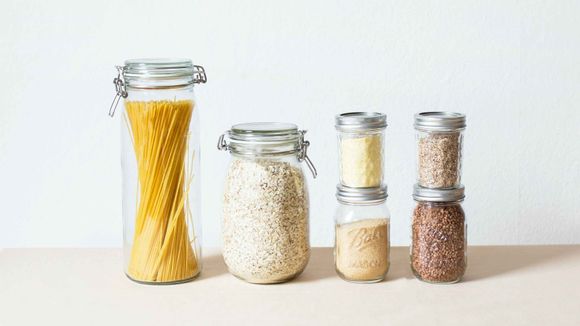
Since the spice is so expensive, it is important to store it properly.
- To store saffron, place it in an airtight container and store it in a cool, dry place.
- The spice will stay fresh for up to six months if stored properly.
